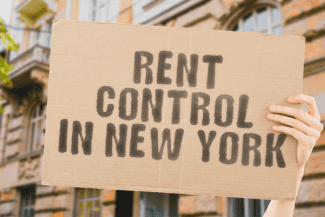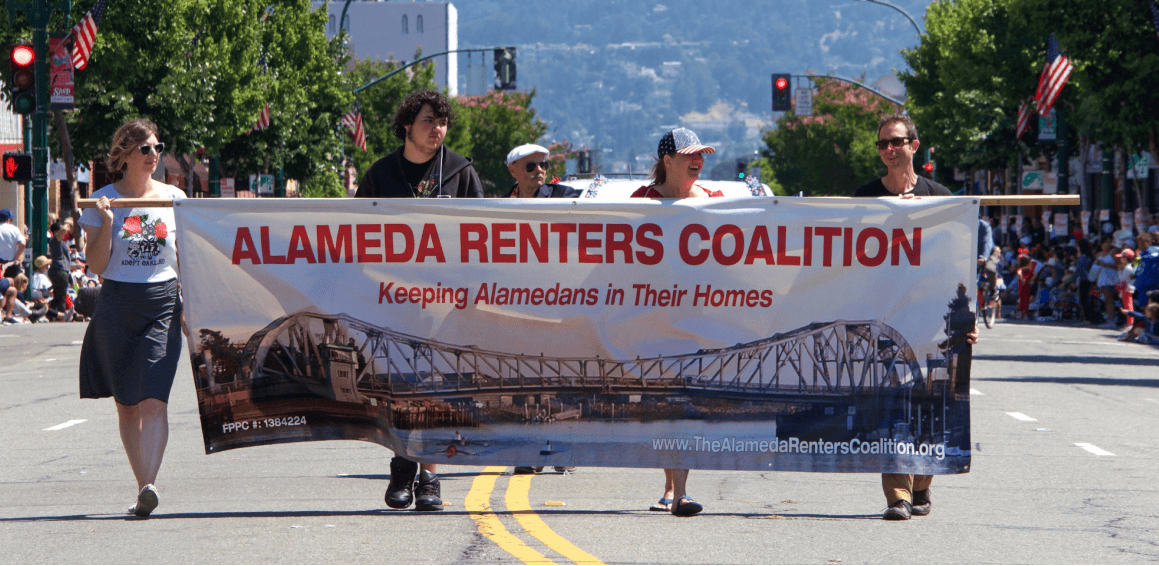As Rents and Evictions Rise Across the Country, More Cities and States Debate Rent Control
As rents and eviction rates rise across the country, more cities and states are debating rent control policies, which housing advocates say are needed to keep more people in their homes.
Affordable housing experts say rents in booming housing markets and in commuter towns have been rising too much and too quickly, putting the most pressure on the poorest residents and fueling the country’s homelessness crisis.
“The difference between housing and food is you can eat less, but with housing, at some point you’ll be homeless,” said Gary Blasi, a public interest lawyer and housing rights expert in Los Angeles. “The market says you can have all the housing you can afford. And if you can’t afford any, then you’re on the street.”
California will vote in 2024 on whether to allow statewide rent control, after proponents gathered more than 800,000 signatures. The state already has one version of rent control, but it doesn’t apply to buildings built after 1995. The new initiative, which has failed in two previous elections, would allow cities and counties to include newer buildings.

And this summer, two landlord groups filed a petition asking the U.S. Supreme Court to overturn New York City’s rent stabilization law, which limits rent increases for more than one million units in the city. If New York’s law — one of the oldest in the country — is ruled unconstitutional, other rent control ordinances across the country will become vulnerable.
Many property owners, including apartment associations, have argued the measures will disincentivize developers from building new apartments and hurt the balance sheets of smaller landlords.
Affordable housing experts point to the fact that existing and proposed rent control measures still allow landlords to raise rent, they just place much-needed restrictions on the amount landlords can raise it by in a certain timeframe.
“Rent control is a negotiation about exactly how much we are willing to accept landlords’ desire for endless profit at the expense of tenants,” said Alex Ferrer, a housing researcher with the Luskin Institute on Inequality and Democracy at the University of California, Los Angeles.
What is rent control?
Rent control and rent stabilization place limits on how much landlords can increase rent by each year. They can be and are often updated by rent control boards, which regulate the policies in many cities and towns.
In recent years, places that have weak rent stabilization measures, including Phoenix, Nashville, and Las Vegas, saw rents rise by more than 20% on average.
Rent control keeps people housed, experts say
In places with the highest rents, such as New York City and some cities across California, rent control is an especially strong protection for renters, Ferrer said. But even California’s current increase limit of 10% can cause rents to quickly escalate to a dollar amount a tenant can’t afford, if they’re in a unit that’s already expensive for them, he said.
When the rent does elevate to an amount that’s unrealistic for a tenant, they often must leave their home, almost as if they were evicted, housing experts argue. The most unethical landlords in places with weak protections sometimes raise rents just to get a tenant out of a unit instead of taking them to court over an eviction, researchers have found.
Rising rents, displacement and formal evictions all contribute to the nation’s homelessness epidemic, housing advocates say. Nearly one-third of the U.S. homeless population lives in California, which has the greatest number of rent-burdened households, according to Blasi.
“It is so much easier to keep someone housed, and cheaper to keep them housed, than it is to deal with the situation after they lose their housing,” Blasi said.
What cities and states have rent control?
- Oregon: In 2019, Oregon became the first state to enact statewide rent control. The law restricts rent increases to 7% plus inflation. In recent years, that’s meant landlords are allowed to hike rent by up to 14%, Oregon Public Broadcasting reported.
- New Jersey: New Jersey has historically had some of the strongest statewide tenant protections in the country, in addition to local rent control ordinances. And “there are concerted efforts from landlord groups to chip away at them,” said Renée Steinhagen, director of New Jersey Appleseed, a public interest law center.
What cities and states are debating rent control?
- Minneapolis: In June, the Minneapolis City Council voted not to put a 3% rent increase cap on the ballot in the fall, after advocates in 2021 decided to allow the council to regulate rent policies.
- Colorado: In April, state lawmakers failed to pass a bill that would have allowed cities to place some limits on rent increases. The bill would have allowed rents to rise higher than inflation, Colorado Public Radio news reported.
In cities and states currently debating rent control measures, Blasi, the housing lawyer, said he thinks developers will keep building no matter what, because they can still make money by charging above-market rents to begin with in luxury apartments.
For Ferrer, the housing researcher, uproar from landlords about rent control hurting their bottom line falls flat because rent control boards allow owners to apply for opportunities to hike rent beyond the rent control limit if their business is hurting. Housing department officials in Los Angeles have said most of the applications from landlords get approved, Ferrer said.
Rising rents lead to extreme commutes for minimum-wage workers
High housing costs are a difficult reality for many Americans.
In California, for example, over half a million Los Angeles County residents spend more than 90% of their income on rent, economists have found.
Rising rents in Los Angeles County have forced more residents to move farther away to the east to San Bernardino and Riverside counties, which historically had lower housing costs, Blasi said.
Minimum wage workers at fancy Los Angeles hotels and restaurants often commute two or even three hours, according to Blasi. He said some hotel cleaning staff sleep in their cars in the city of Los Angeles during the week, away from their children, because their three-hour commutes are impossible to make daily.
More far-flung towns in Southern California have also seen rents go up because of increased demand as more people flock to the area for lower rents, creating a cascading effect of rising rents.
“Where the rent inflation is highest in California is not in the big cities, it’s in the cities to which tenants are fleeing,” Blasi said. “The housing costs are really disrupting communities and lives.”
This year, the heavily Latino municipalities of Maywood, Bell Gardens and Cudahy in southeast Los Angeles County passed their own rent control measures to try to curb the problem.
“Elected officials and tenant advocates support tenant protections because they are finding that, despite working full time, residents are increasingly unable to meet rising housing costs,” said Robert Desir, a staff attorney with New York’s Legal Aid Society who worked on the city’s rent stabilization law.
Source: USA Today















 Accessibility
Accessibility